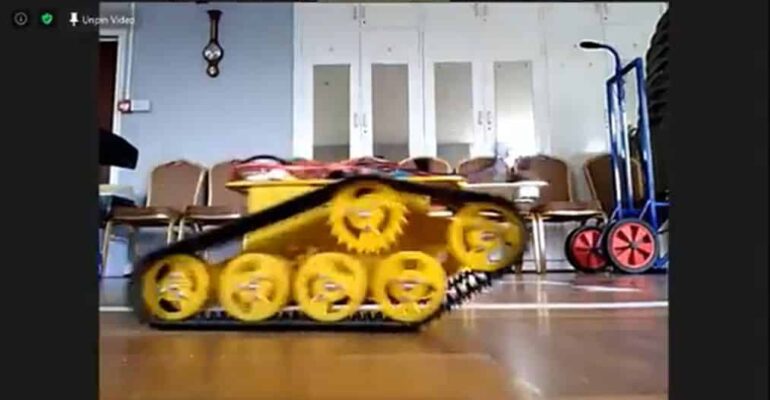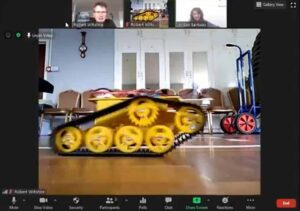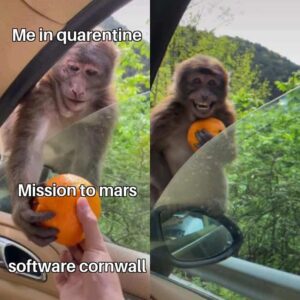Mission to Mars at Home July 2020
The Mission to Mars Work Experience for students has been running since 2014. As an award winning education initiative there has already been recognition that Software Cornwall offers a valuable workplace encounter. At the beginning of 2020 schools were very quick to cancel any careers encounters for students with local employers because of the Covid-19 threat to health. The work experience week from all employers for Cornish students held in July was a very early casualty.
The week in July involves thousands of students being placed within companies around the county. Mission to Mars already had 37 students in place to participate. These students are potentially the industry’s future employees. Providing as many meaningful encounters with employers whilst in school provides them with the confidence and knowledge that this industry has something to offer. Mission to Mars was not to be written off quite yet.
The Easter break normally sees a group of around 20 students attending the first Mission to Mars of the year. The face to face engagement was ruled out very quickly. The lead time to the work experience was rather short. So worksheets were produced breaking down the Mission into manageable parts to be able to complete at home alone. Code could be emailed to Software Cornwall and the resulting drive video of the rover shared on social media for the students to view. 10 students signed up, two got really stuck in and one finished all the tasks. From this initial trial lessons were learnt and plans put together for the larger summer experience.
The Work Experience in July already had 37 students in place. All signed up and ready to go. The call for interest in an online version at home was put out to see how many would still be interested and able to attend. 24 students said they’d still be interested and their parents would permit them to do this. Schools, who had all cancelled work experience, also allowed the students time out to participate. A different kind of Mission was required than the Easter version. Something more akin to the usual experience but this time being held remotely.
Working from Home
The tech industry was well placed to switch to working from home when the requirement was forced on us all. Employees are generally well versed in remote working. The Mission needed to mirror this change but still follow the tried and tested form of the real Mission to Mars.
It was decided to utilise the now extremely popular Zoom as the meeting space. Zoom breakout rooms would take the place of the desks for the teams of 4 students to work at. Enabling the sharing of their computer desktops, each could contribute to the development of the code. Students had to utilise Git to upload the code to a Github organisation team space to share their work with each other and with the Software Cornwall lead. A Discord server with team channels was available for extra communication and general chatter. The whole Mission would be placing a much larger personal workload on the participants than was usual.
July 13th 2020 launch day. A village hall was hired for the Mission headquarters. Giving space to run the rovers around. Jordan Barkway, ex Mission student, now qualified Junior Software Developer at Bluefruit Software in Redruth was in her office to remotely assist. The students started to log in to Zoom. Of the 24 that were due to arrive an impressive 21 appeared on the day. 19 students from Cornwall and two in Scotland. The Mission to Mars 2020 at Home was on.
Introductions to the Software Cornwall team, Jordan, and the Mission were made. Participants were introduced to Git by asking them to create a personal elevator pitch and using Git version control to record the changes. The elevator pitch was then used to introduce themselves and to break the ice.
The next step was creating the individual teams. Giving them an identity for the week. From their breakout rooms the divided group created a personalised team name and team values. They then edited a team Github Readme to record their team personas. Now they knew how to use Git to update a remote file and track the changes. Now to make sure everyone was capable of doing this.
The Missions always used Scrum Tennis as a means of introducing agile team working to the students. Scrum Tennis requires a group of players to pass tennis balls around as many times as possible in a period of time following some simple rules. Very competitive, a great ice breaker but serving a very useful illustration at the same time. But how to achieve this remotely? With Scrum Git naturally.
Each team member was required to update their Github Readme with their name and an animal name in alphabetical order. Each update required a pull, the changes made and then the push back to Github. How many times could they do this? That didn’t really matter. It just got them all working together and using the tools for the week under a stressful situation without realising it. It’s just a game after all.
Hardware Replacement
Mission to Mars normally requires the teams to build circuits using Arduino development boards to replicate the rovers electronics on their desks. These boards can be freely used to test the code before using the real rovers. Remote working meant a different approach as the hardware was not available for them to use. Fortunately TinkerCad has almost an exact way of replicating this online. Including coding the circuits and observing the results.
TinkerCad was the final piece required to make the remote work experience possible. It also allows collaboration between users on the same workspace. Code developed on TinkerCad could be copied locally on the students computers, pushed to Github and then a test drive requested. At the village hall Software Cornwall pulled the code down onto the rovers. While the rover was driving around the video was shared via Zoom allowing the students to observe their handiwork. Then back to their breakout rooms to improve on their work.
To break things up on the Tuesday Wo King of Hi9 came in and presented Artificial Intelligence and machine learning to the teams. A fascinating talk with demonstrations that then led to Wo spending the rest of the afternoon discussing ethics with the students. Highly engaging and informative.
As the week progressed the students worked in their remote teams. Gaining in confidence with their new work environment and colleagues. Discord provided not only a means to communication but a way of bonding too. Light chatter bouncing back and forth. For a group of students who had mostly never met each other, and still haven’t, they formed productive relationships very quickly.
Looking Back
The week consisted of collaboratively building circuits online, sharing Arduino code creation, pushing and pulling to Github, conversations via Discord, desktop sharing, watching rovers drive via video link, and joining a presentation and discussion from Wo King of Hi9 on AI and machine learning. Personal elevator pitches were created and practiced, teams built, names and identities saved as Github Readme’s, and finally presenting their rover demonstration piece to each other.
Despite a few technical hitches the week provided a valuable engagement for the pupils. They are all quite keen to repeat the experience again in the real world. Face to face and with hands on the hardware. But credit to them for taking on the experience, working together to make the week the success it was.




